This is the 15th post in a series of Nikon D850 tests. The series starts here.
As a follow-up to the CDAF images in the previous post, I made a series of phase-detection autofocus (PDAF) images of my three-level target. The target uses a pattern devised by Horshack at the central AF point, which should give the camera something easy to focus on. The aperiodic nature of the target should avoid systematic errors that sometimes befall PDAF systems with subjects with regular repetition.
Here’s the target:
Mounted to the door, it looks like this:
Here’s the protocol:
- Nikon 58 mm f/1.4 on D850.
- ISO 64
- AF-S, single servo mode
- Release priority: focus
- Aperture exposure mode
- f/1.4 through f/4 in whole stops
- 32 exposures at each f-stop
- EFCS on
- Nikon remote release, half-pressed until confirmation observed
- Lens ring racked between shots
- Wescott LED panels set to 5500 K.
- Target distance, 3 meters.
I measured the MTF50 for the three raw color planes using dcraw in document mode, MTF Mapper, Matlab, and Excel.
Here are the results wide open:
The (invisible, in this plot, but visible in some of the others) lighter blue line is the average (mean) MTF50 of all 32 images in each plane of the target. The orange and gray lines have the standard deviation of the results (sigma) subtracted from and added to the mean. About 70% of the data points would lie between those two lines if the data were Gaussian.
This is a nice, tight grouping, with the peak right in the middle, which is what we want to see.
The green channel doesn’t look as good, with the sharpest plane being nearer to the camera than the focus point. There’s also a fair amount of variation in the mid and far distances.
The blue channel looks just about as good as it could. Unfortunately, the green channel, the not-so-great one, is the most important.
Let’s see what happens when we stop down one stop.
Now we’re seeing some more variation in the red channel. The correct focusing distance for that channel appears to be between the mid and far planes.
The green channel, which was back-focused at f/1.4 is now much less so.
The blue channel appears to be properly focussed to a bit front focused. The blue channel is the least important one for most kinds of photography and subject matter.
One more stop down:
The red channel is more front-focused.
The green channel is close to perfect.
The blue channel is a hair back-focussed.
One last stop further down; after that the depth of field will swamp out the differences:
The red channel is slightly front-focused.
The green channel is slightly back-focused.
We can’t say much about the blue channel.
You can see the issue of whether and how to fine-tune the PDAF system is more complicated than the way it’s usually described. What color channels do we want to use to optimize the focus point? What apertures are the most important? The D850 compensated for focus shift algorithmically for lenses that it recognizes, but apparently that compensation is not perfect. What distance should we use for the PDAF tuning?
Lots to think about. I’m not going to rush right out and fine-tune this lens.
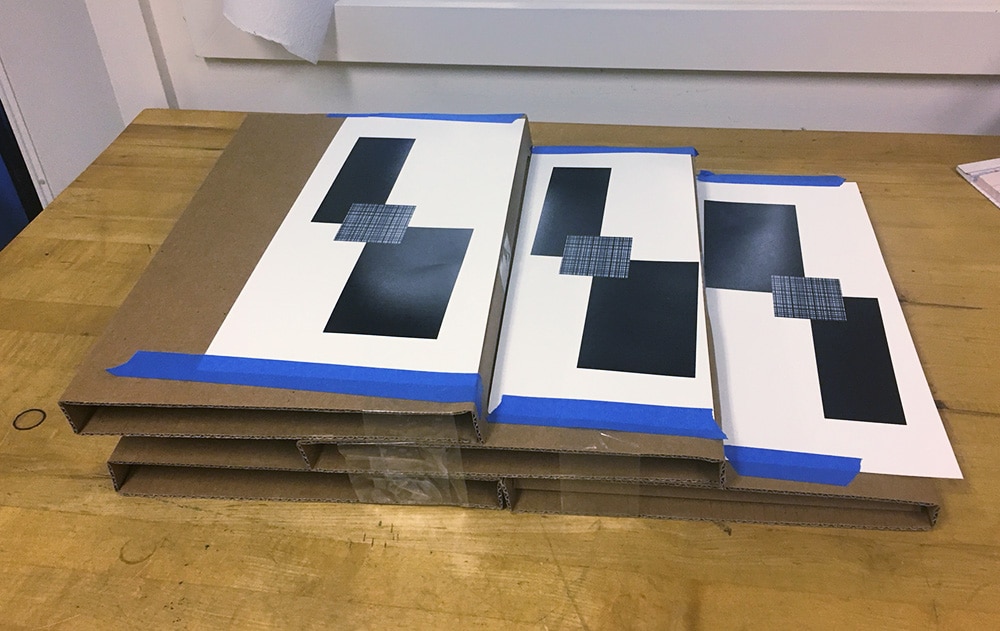


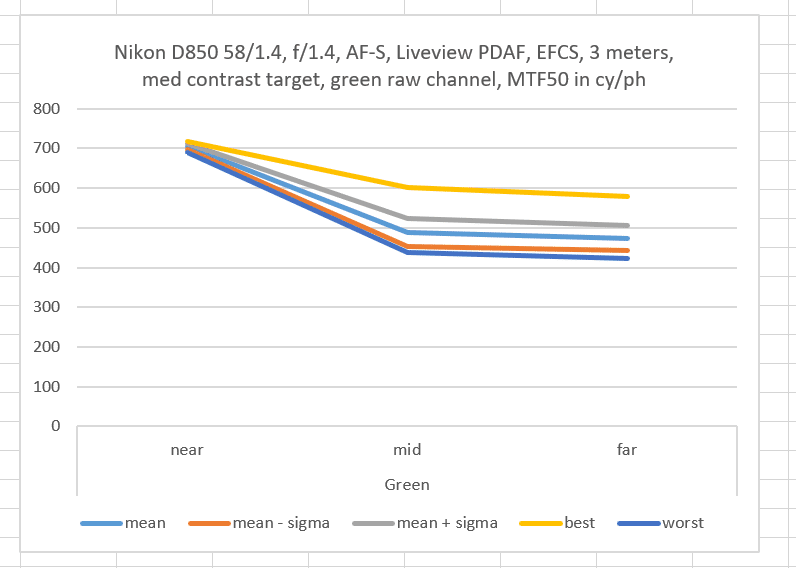


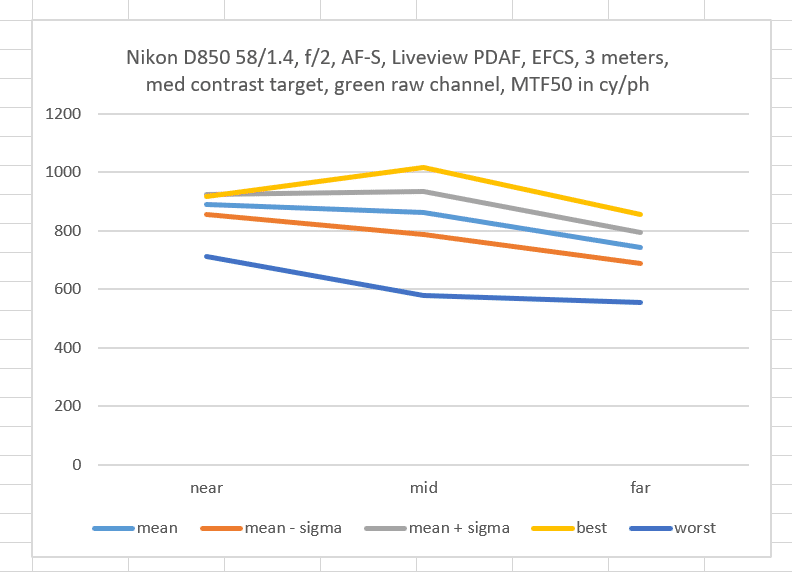

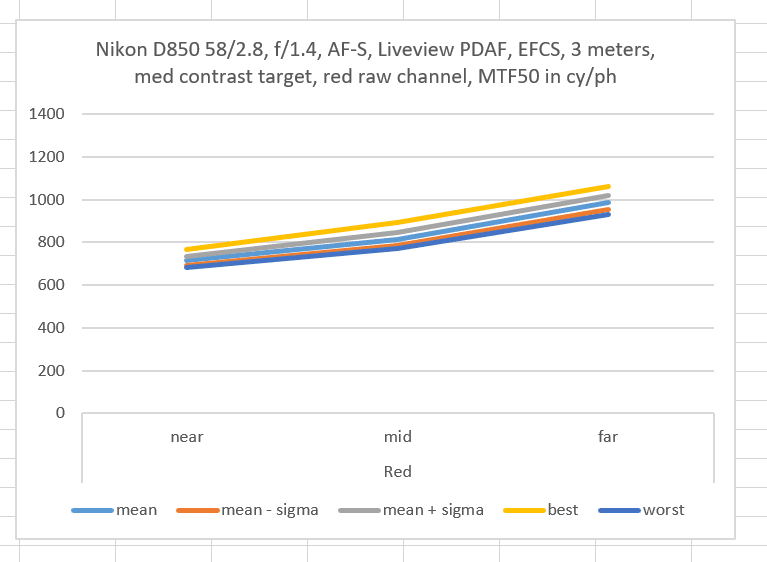
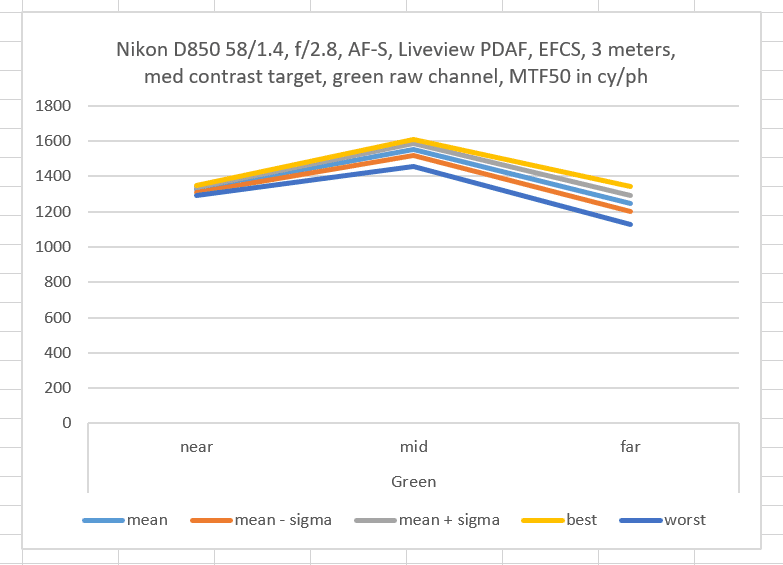


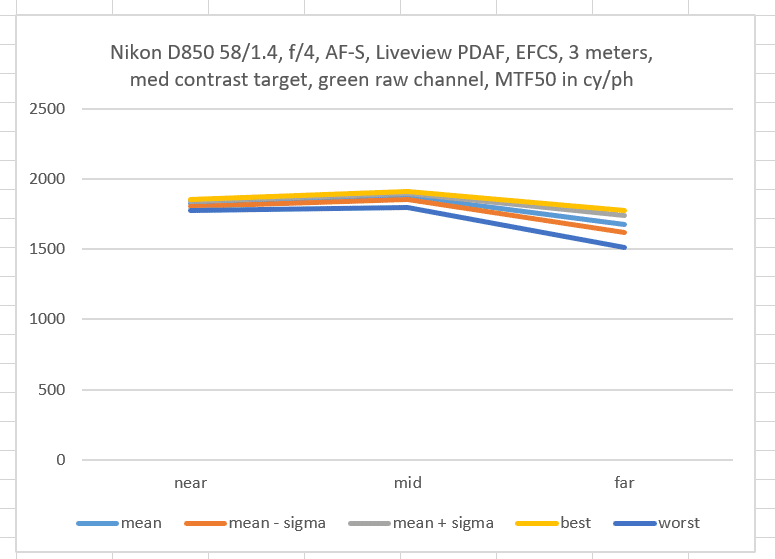

[…] lens, and the same bias used for all distances and apertures for that lens. We’ve seen in this post that there are variations in PDAF bias with aperture (in spite of, or maybe because of, the way that […]